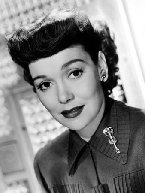Cardinals weren't a common sight in Ohio before the 19th century due to the thick forests throughout the state, a habitat that didn't suit the needs of this vibrant bird. But by the late 19th century, Ohio's diverse landscape changed to woodlands and open plains (thanks to established farmlands) and helped the cardinal population in the state flourish.
The cardinal became Ohio's official state bird in 1933. It's also the state bird of Illinois, Indiana, Kentucky, North Carolina, Virginia, and West Virginia.
The northern cardinal (Cardinalis cardinalis) is a bird in the genus Cardinalis; it is also known colloquially as the redbird, common cardinal, red cardinal, or just cardinal (which was its name prior to 1985). It can be found in southeastern Canada, through the eastern United States from Maine to Minnesota to Texas, and south through Mexico, Belize, and Guatemala. It is also an introduced species in a few locations such as Bermuda and Hawaii. Its habitat includes woodlands, gardens, shrub lands, and wetlands.
The northern cardinal is a mid-sized songbird with a body length of 8.3–9.1 in. It has a distinctive crest on the head and a mask on the face which is black in the male and gray in the female. The male is a vibrant red, while the female is a reddish olive color. The northern cardinal is mainly granivorous, but also feeds on insects and fruit. The male behaves territorially, marking out his territory with song. During courtship, the male feeds seed to the female beak-to-beak. A clutch of three to four eggs is laid, and two to four clutches are produced each year. It was once prized as a pet, but its sale as a cage bird was banned in the United States by the Migratory Bird Treaty Act of 1918.
The common name, as well as the scientific name, of the northern cardinal refers to the cardinals of the Roman Catholic Church, who wear distinctive red robes and caps. The term "northern" in the common name refers to its range, as it is the northernmost cardinal species.
The northern cardinal is a mid-sized songbird with a body length of 8.3–9.3 in. and a wingspan of 9.8–12.2 in. The adult weighs from 1.19–2.29 oz, with an average 1.58 oz. The male averages slightly larger than the female. The adult male is a brilliant crimson red color with a black face mask over the eyes, extending to the upper chest. The color becomes duller and darker on the back and wings. The female is fawn, with mostly grayish-brown tones and a slight reddish tint on the wings, the crest, and the tail feathers. The face mask of the female is gray to black and is less defined than that of the male. Both sexes possess prominent raised crests and bright coral-colored beaks. The beak is cone-shaped and strong. Young birds, both male and female, show coloring similar to the adult female until the fall, when they molt and grow adult feathers.
The diet of the northern cardinal consists mainly (up to 90%) of weed seeds, grains, and fruits. It is a ground feeder and finds food while hopping on the ground through trees or shrubbery. It will also consume snails and insects, including beetles, cicadas, and grasshoppers; it feeds its young almost exclusively on insects.
What's sure to lure your gang to the table? This fresh homemade version of Salmon Burgers that starts with the fresh catch from the market fish counter, and ends with lots of tasty raves. Don't forget to try our homemade Dill Sauce too!
- 1 pound skinless salmon fillets, cut into 1-inch chunks
- 1 to 2 slices fresh white bread
- 2 scallions, cut into 1-inch slices
- 1 tablespoon lemon juice
- 1/4 teaspoon salt
- 1/4 teaspoon black pepper
- Place all ingredients in a food processor; pulse until coarsely chopped and well combined. Form mixture into 4 burgers.
- Coat a skillet with cooking spray. Cook burgers over medium-high heat 3 to 4 minutes per side, or until cooked through.
- bird-watching
- studying birds
- educating others
- other bird-related activities
- A particularly important National Bird Day activity is bird adoption. According to the Atlanta Journal Constitution newspaper article, many bird enthusiasts celebrate by adopting birds on this day and educating future bird owners about the special issues involved with taking care of birds, including the “proper care, cleanup, noise and biting, feeding, diet and their need for daily interaction.”
There are approximately 10,000 species of birds.
HOW TO OBSERVE
- Pick up a bird identification book. It will help you to learn about species in your area and identify those frequenting your bird feeders.
- Enhance the attraction of your backyard. Add feeders, shelter and more. Learn what birds in your area like to eat and watch them flock to your sanctuary.
- Donate to a bird sanctuary or aviary dedicated to improving the survival of endangered birds.
- While you’re learning about all the amazing species, visit an aviary. A botanical garden, zoo, or conservation area may offer close up viewing of some of the more exotic species you’ve never seen before.















